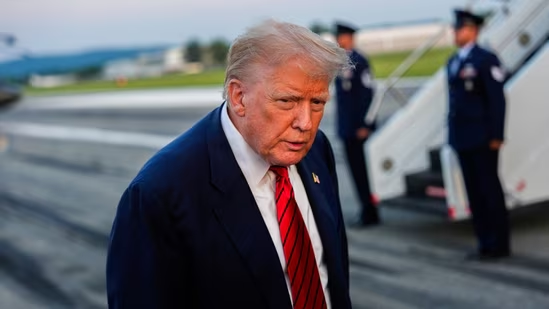
Trump
In a development that could severely strain U.S.-India trade relations, former U.S. President and Republican frontrunner Donald Trump has issued a fresh warning to India, days after proposing a 25% tariff on all foreign goods if he returns to the White House. Trump’s remarks, seen by many as a direct threat to Indian exports, have sent ripples across diplomatic and economic corridors in New Delhi and Washington alike.
As the 2024 U.S. presidential campaign intensifies, Trump is doubling down on his “America First” economic strategy. His aggressive trade rhetoric, including targeting key partners like India, China, and Mexico, signals a return to protectionist policies that marked his first term in office.
Trump’s Warning to India
Speaking at a campaign rally in Pennsylvania, Trump lashed out at countries he accuses of “unfair trade practices,” naming India as one of the nations “taking advantage of the U.S. for too long.”
“India puts big tariffs on our goods. They charge us for everything, and we let their products in for free,” Trump said. “If I’m back, we will match them — maybe even double it. India better watch out.”
This statement comes just days after Trump proposed a blanket 25% tariff on all foreign-made products entering the U.S., a sweeping move that would heavily impact global trade, including India’s $118 billion annual exports to America.
India’s Position and Response
So far, the Indian government has not issued an official statement responding to Trump’s recent threat. However, sources in the Ministry of Commerce and External Affairs have indicated that New Delhi is closely monitoring the developments.
India and the U.S. have enjoyed a generally upward trade trajectory, with bilateral goods and services trade crossing $200 billion in 2023. But tensions have simmered periodically — especially during Trump’s first term when he revoked India’s preferential trade status under the Generalized System of Preferences (GSP) in 2019, citing lack of “equitable and reasonable access” for American goods.
India had responded back then with retaliatory tariffs on U.S. goods such as almonds and apples. A similar situation may arise again if Trump’s threats translate into actual policy.
Impact on Indian Economy and Exports
The prospect of a 25% tariff or even higher targeted duties on Indian products could have significant ramifications, particularly for sectors like:
- Textiles and Garments: India’s apparel exports to the U.S. stand at over $4 billion annually.
- Pharmaceuticals: Indian drugmakers are major suppliers of generic medicines to the U.S.
- Automobile Components: A high tariff could disrupt India’s fast-growing auto parts export market.
- IT Services and Outsourcing: While not directly impacted by tariffs, Trump’s broader anti-offshoring rhetoric poses risks.
Experts warn that if Trump’s policies are implemented, Indian exporters may lose competitiveness in the U.S. market, paving the way for countries like Vietnam, Bangladesh, or Mexico to fill the gap.
Geopolitical Angle: Trade vs. Strategic Partnership
What makes Trump’s fresh threat particularly complex is the strategic relationship India and the U.S. have been nurturing in recent years. Both countries have deepened ties in defense, technology, and counter-terrorism, united by shared concerns over China’s growing influence in the Indo-Pacific.
However, Trump’s approach often prioritizes transactional deals over long-term diplomacy. His unpredictable style, as seen during his first term, could complicate the broader Indo-U.S. partnership if trade friction escalates.
Indian Diaspora and Political Calculus
It is also worth noting that Indian-Americans are a growing political force in the U.S., with significant influence in key swing states like Michigan, Pennsylvania, and Georgia. Trump’s latest remarks may alienate some in the community, though he has in the past received substantial support from segments of the diaspora for his tough stance on China and Islamic extremism.
Political analysts believe Trump’s strategy is aimed at energizing his base with promises of bringing back American manufacturing jobs. However, his confrontational trade tactics may risk alienating not just foreign partners but also domestic businesses reliant on global supply chains.
What Lies Ahead?
Trump’s latest warning is a reminder that if he wins re-election, the global trade landscape — including India’s position in it — could be dramatically reshaped. With the U.S. being India’s largest trading partner, any shift in tariff policy would force New Delhi to explore alternative markets and potentially re-negotiate its terms with Washington.
For now, both Indian policymakers and exporters are treading cautiously, hoping that election-season rhetoric does not turn into full-scale trade warfare. But as the U.S. election approaches and Trump’s campaign intensifies, India must prepare for a possibly turbulent chapter in its trade relations with a country that is both its biggest economic partner and a key strategic ally.
Thanks For Reading